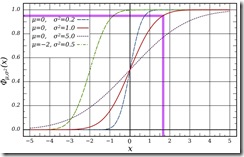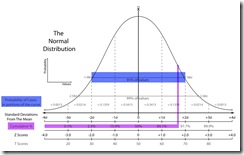This article is/will be absolutely huge for many pediatric echo labs:
J Am Soc Echocardiogr. 2008 Apr 10 [Epub ahead of print] (PubMed link)
Regression Equations for Calculation of Z Scores of Cardiac Structures in a Large Cohort of Healthy Infants, Children, and Adolescents: An Echocardiographic Study.
Pettersen MD, Du W, Skeens ME, Humes RA.Carman and Ann Adams Department of Pediatrics, Wayne State University School of Medicine, Detroit, Michigan(M.D.P., W.D., R.A.H.).
Prediction equations (nonlinear regression analysis against BSA) are published for 21 M-mode and 2D echo measurements:
- RVDd
- IVSd
- IVSs
- LVPWd
- LVPWs
- LVIDd
- LVIDs
- Aortic valve annulus
- Sinuses of Valsalva
- Sinotubular junction
- Transverse aortic arch
- Aortic isthmus
- Distal aortic arch
- Aorta at diaphragm
- Pulmonary valve annulus
- Main pulmonary artery
- Right pulmonary artery
- Left pulmonary artery
- Mitral valve annulus
- Tricuspid valve annulus
- Left atrium
That pretty much covers everything from an echo measurement/congenital heart disease angle, so...
WOW.
Without a doubt, a tremendous bit of work on a large data set.
I find a few things about the article to be interesting:
- This data looks to be to be a subset of a Detroit/D.C./Philips superset, presented in abstract form in 2004 (See JASE May 2004, Sable et. al.). Then, they presented data on over 6,000 patients... presented in this article, the authors claim to have analyzed a "large cohort"- which is undeniably true- but it is not as large as it might have been. There remains something proprietary about the superset.
- Some descriptions about the patient population are notable by their absence: the ranges of age and size, gender and race, and the manner in which the BSA was calculated. All seem to me to be typical required descriptions of the methodology, but are unreported in this presentation.
- The choice of a polynomial/nonlinear regression model is unique, in light of recent work.
It is this last point—the choice of the regression model—that I find most interesting. Recent and prior work has demonstrated suitable models of cardiac growth using: an allometric equation (Neilan, Pradhan, and Weyman), the attractive principles of fluid dynamics and geometric similarity (Sluysmans & Colan), or even an old-school transform both sides (TBS) approach (Abbott & Gutgesell). None of these other models describe the "late deflection" in the relationship that this study's third order polynomial approach does. In my opinion, this may not ideally model the relationship of cardiac structures for larger patients. However, most of the work in pediatric cardiology deals with smaller patients, and the model's performance may be quite suitable for the majority of these patients.
Fascinations with the choice of model aside, this article represents the most comprehensive collection of z-score prediction equations for pediatric echocardiography to date. An online z-score calculator based on these equations can be found, of course, at
ParameterZ.com
It turns out that there is a considerable limitation of the application of this model to larger pediatric patients (like High School athletes). A large 15 year-old could be pushing 2.5 m2 and the model's predicted LVIDd for a patient of that size is an unreasonable 11-17 cm. I have therefore constrained the calculation to z-scores of subjects with BSA < 2.0m2



